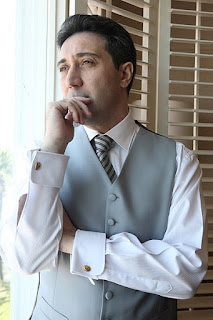NEW - Domenico Scarlatti - composer
Neapolitan famous for his 555 keyboard sonatas
The composer Giuseppe Domenico Scarlatti, known as Domenico Scarlatti, was born in Naples on this day in 1685. Born in the same year as Johann Sebastian Bach and George Frideric Handel, Scarlatti was the sixth of 10 children fathered by the composer Alessandro Scarlatti. Like his father, Domenico composed in a variety of musical styles, making the transition in his lifetime from Baroque to traditional Classical. Today, he is known mainly for his 555 keyboard sonatas, which expanded the musical possibilities of the harpsichord. Although he began his career in Naples, Scarlatti spent a large part of his life in the service of the Portuguese and Spanish royal families. In fact, he died in Madrid in 1757. Early in 1701, at the age of just 15, Scarlatti was appointed as composer and organist at the royal chapel in Naples. At 17, his first operas, L’Ottavia restituita al trono and Il Giustino, were produced there. In 1705 his father sent him to Venice, reputedly to study with the composer Francesco Gasparini, although nothing is known with certainty about his life there. Scarlatti is known to have been in Rome from 1709, having entered the service of the exiled Polish queen Marie Casimire. Read more…
_________________________________________________________________
Primo Carnera - boxer
Heavyweight’s career dogged by ‘fix’ rumours
The boxer Primo Carnera, who was world heavyweight champion between 1933 and 1934, was born on this day in 1906 in a village in Friuli-Venezia Giulia. After launching his professional career in Paris in 1928, Carnera moved to the United States in 1930 and spent many years there, returning from time to time to Italy, where he had a house built for himself and his family, but not permanently until he was in declining health and decided he would like to spend his final years in his home country. He won 89 of his 103 fights, 72 by a knockout, although there were suspicions that many of his fights were fixed by the New York mobsters who made up his management team, even including the victory over the American Jack Sharkey that earned him the world title. Physically, he was a freak. Said to have weighed 22lbs at birth he had grown to the size of an adult man by the time he was eight. By adulthood, he was a veritable giant, by Italian standards, standing 6ft 6ins tall when the average Italian man was 5ft 5ins. His fighting weight was as high at times as 275lb (125kg). He was born into a peasant family in the village of Sequals, around 45km (28 miles) west of Udine. Read more…
_________________________________________________________________
Trieste becomes part of Italy
Fascinating city retains influences from past rulers
The beautiful seaport of Trieste officially became part of the Italian Republic on this day in 1954. Trieste is now the capital of the Friuli-Venezia Giulia region, one of the most prosperous areas of Italy. The city lies towards the end of a narrow strip of land situated between the Adriatic Sea and Slovenia and it is also just 30 kilometres north of Croatia. Trieste has been disputed territory for thousands of years and throughout its history has been influenced by its location at the crossroads of the Latin, Slavic and Germanic cultures. It became part of the Roman Republic in 177 BC and was granted the status of a Roman colony by Julius Ceasar in 51 BC. In 788 Trieste was conquered by Charlemagne on behalf of the French but by the 13th century was being occupied by the Venetian Republic. Austria made the city part of the Hapsburg domains in the 14th century but it was then conquered again by Venice. The Hapsburgs recovered Trieste in the 16th century and made it an important port and a commercial hub. Trieste fell into French hands during the time of Napoleon but then became part of Austrian territory again. Read more…
_________________________________________________________________
Giuditta Pasta – soprano
The first singer to perform the roles of Anna Bolena and Norma
Singer Giuditta Pasta, whose voice was so beautiful Gaetano Donizetti wrote the role of Anna Bolena especially for her, was born on this day in 1797 in Saronno in Lombardy. Her mezzo-soprano voice was much written about by 19th century opera reviewers and in modern times her performance style has been compared with that of Maria Callas. Indeed, Vincenzo Bellini’s opera Norma, which Callas would turn into her signature role, was actually written for Pasta in 1831. Pasta was born Giuditta Negri, the daughter of a Jewish soldier. She studied singing in Milan and made her operatic debut there in 1816. Later that year she performed at the Teatre Italien in Paris as Donna Elvira in Don Giovanni, but it was not until 1821 that her talent was fully recognised when she appeared in Paris as Desdemona in Gioachino Rossini’s Otello. Giuditta married another singer, Giuseppe Pasta, in 1816 and as well as being her regular leading man he handled her business affairs and identified likely roles and composers who might wish to work with her. She sang regularly in Milan, Naples, Paris and London and her unique voice attracted a lot of attention. Read more…
Home
























